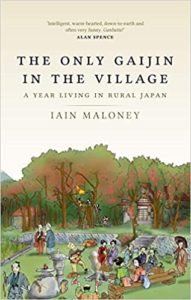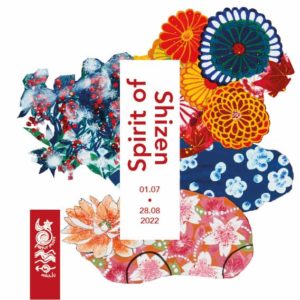A Tale of Three Memoirs: A Tokyo Romance, by Ian Buruma, Living Carelessly in Tokyo and Elsewhere by John Nathan and Sarasvati’s Gift: The Autobiography of Mayumi Oda–Artist, Activist, and Modern Buddhist Revolutionary, by Mayumi Oda
By Leanne Ogasawara
It was Japan before the Bubble. And yet, despite the lack of economic miracles, 1960s Tokyo was a city bubbling with excitement. The deposed (WWII) god-man, Hirohito, was still on the throne, albeit with a quieter presence. A time of change brought a divided nation, with the communist league of students putting pressure on the US-Japan Security Alliance, and amidst the fervent protest campaigns that mark the era, artists rose up to bring in a new aesthetic.
Ian Buruma was late to the party, arriving in the mid-1970s from Holland. Buruma has been more recently in the news—not for his memoir A Tokyo Romance but because of his fall from grace from The New York Review of Books. This occurred shortly after becoming the third editor since its founding, when he was forced-out amid outrage over an editorial decision deemed unsympathetic to the contemporary mood of the #metoo movement.
Buruma’s memoir came out by Penguin just prior to this scandal in 2018.
The book roughly covers his time living in Japan from 1975 to 1981. Six years is not long when it comes to language-learning or becoming at home in a megacity like Tokyo, but Buruma is no ordinary person. Half-Dutch (Protestant) and half-British (German, Jewish), he arrived in Japan already fluent in two languages and cultures. And it would not take long before he had become friends with some of the greatest artists of the time, participating in cutting-edge, avant-garde theater performances to boot.
A Tokyo Romance opens with a wonderful scene of the young Buruma, still in Holland, leaving a party telling someone of his plans to move to Japan, only to be told in no uncertain terms that he should, “Stay away from Donald Richie’s crowd.”
But what is a young man with a passion for film off to Japan to do but seek out Donald Richie?
This was the heyday of the “three greats” of Japanese cinema – Yasujiro Ozu, Kenji Mizoguchi and Akira Kurosawa. And before long, Buruma is participating in the avant-garde world of Butoh dance, including acting in Juro Kara’s “Red Tent” performances around the country. In one of the highlights of the book, he accompanies Kara to New York City where they stay in the rundown Chelsea Hotel, with slugs and worms climbing up the wallpaper. While in New York, Buruma unpacks some of the complicated issues revolving around intercultural experiences and the cultural divide between Japan and the West describing the famous 19th century experience of the novelist Sōseki Natsume when he was in London. Kara, like Sōseki before him, was uncomfortable and hardly left his hotel. Buruma wonders at this, given Kara’s boldness and exuberance back home.
He also connects the famous incident of Sōseki catching a glimpse of himself in a shop window in London and being horrified at his diminutive appearance, to an incident in 1981, when the Japanese exchange student Sagawa Issei, lured a German woman back to his apartment in France and killed her. The French did not keep Sagawa long after questioning and ipon his release he made the rounds of Japanese TV shows in the early 1990s. Apparently, before committing the crime, Sagawa wrote of sitting in a café one day: “Suddenly I looked at the glass front door of the café and reflected there were the five of us. A small Oriental in a charcoal blazer was submerged amid large white-skinned men and women. Instinctively, I looked away.”
Investigating the experience of alienation, Buruma spends many words describing his sex life vis-à-vis Japan. Unlike Donald Richie, who was a sexual refugee in more tolerant Japan, Buruma arrived with his Japanese girlfriend. He was no refugee. And he writes of his many affairs and romances with men and women, before he eventually marries for a time—in the end, moving to London, the home of his mother.
Toward the end of the book, Buruma makes mention of translator and scholar John Nathan, whose life trajectory had some similarity with Buruma’s and whose memoir, Living Carelessly in Tokyo and Elsewhere came out in 2008.
John Nathan might be best known as translator and biographer of Yukio Mishima. But he also translated Oe Kenzaburo, and many people consider him to be one of the great critics and translators of Japanese literature.
He arrived in the early 1960s after earning a BA in Japanese literature from Harvard, where he studied under Edwin O. Reischauer. In Tokyo, he hit the ground running, accepted into Tokyo University as one of the first foreign nationals to pass the ordinary entrance exam. Then, meeting Mishima, he quickly became involved in translation, starting with Mishima’s The Sailor Who Fell from Grace with the Sea. Mishima, who was hell-bent on getting the Nobel Prize, tried to get Nathan to sign on as his official translator, but surprisingly, Nathan had already become enamored with Kenzaburo Oe. I say surprisingly because for a long time, Nathan’s biography of Mishima was required reading in literature departments. By the time that book came out, however, Nathan had become much more interested in Oe’s work, going on to produce the English translations that would earn Oe the Nobel Prize in 1994.
Like Buruma, Nathan hobnobs with the crème de la crème of the Japanese art world. Similarly becoming almost obsessed with Japanese cinema, Nathan worked for years on a script for Hiroshi Teshigahara’s film “Summer Soldiers” about U.S. Army deserters seeking refuge in Japan. He would leave Princeton, where he was teaching Japanese literature, in the late 1970s to pursue this desire to become a filmmaker.
His memoir—much like Buruma’s—is also concerned with his romantic life. In Nathan’s case, he fell in love and married artist Mayumi Oda in 1962.
Mayumi Oda is sometimes called the “Matisse of Japan.” She is best known for her paintings, prints and silk screen works of colorful and gorgeous goddesses and female bodhisattvas playfully depicted in a garden world–filled with luscious vegetables and plants. She is a great painter of goddesses.
And yes, she also came out with a memoir—though she prefers to call it an autobiography—Sarasvati’s Gift: The Autobiography of Mayumi Oda–Artist, Activist, and Modern Buddhist Revolutionary. It is interesting to read about Oda and Nathan’s romance and eventual divorce from both perspectives: his and hers. An extraordinary woman and artist, Oda’s story is uniquely about “coming home,” which is to say coming to America, where she has devoted her life to political activism, spirituality, and art.
Born in 1941, Oda writes movingly about her recollections as a small child and seeing footage of the devastation brought by WWII, of the atomic bombs dropped on Hiroshima and Nagasaki and the wounded soldiers begging on the streets of Tokyo. From her earliest years, she dedicated her life to the pursuit of peace—and eventually traveling to America with her then-husband John Nathan, she would find her place amidst the faithful at the Zen Center in San Francisco as well as in her Bay Area art studio.
Unlike Oda, who perhaps could find home wherever she landed, both Nathan and Buruma struggled with insecurity when abroad in the way reminiscent of Sōseki in London.
In Living Carelessly in Tokyo and Elsewhere, Nathan describes the insecurities that led him to leave Japan, recalling something the avant-garde playwright Kara Juro said to him as the two sat in a hotel bar in Kyoto.
“You understand us, and when you speak you sound just like we do,” he rumbled, and then, switching to English, “But, John, in Japan you cannot win!”
Nathan says, “How right he was, I remember thinking that night, but for a different reason than he supposed. I took his words to mean that victory in Japan would never be a victory I had truly earned. For years I had been troubled by the possibility that I possessed the wherewithal to distinguish myself only as an exotic foreigner in an insular island country. I was determined to prove myself on home ground.”
This is the quote that Buruma references toward the end of his memoir. Buruma, who was also a friend of Kara’s remarked that, in the end, he did not want to be the eternal explainer of Japan. “The constant explainer runs the risk of no longer learning, and becoming a bore. And I didn’t feel the same need to escape that which shaped the life of my great American mentor. I had no reason to fear the customs and norms of my own culture. What I did fear was to catch a dose of gaijin-itis, and become obsessed with the often imaginary slights that go with being pegged to one’s ethnicity. And so I said goodbye to Japan.”
Buruma would go on to write one of the most important Japan books of the 1990s, The Wages of Guilt: MEMORIES OF WAR IN GERMANY AND JAPAN, while Nathan after pursuing film for many years on both coasts, ended up a tenured professor of Japanese literature at University of California, Santa Barbara.
Each of the three memoirs is a great read in its own right. But when read together, the triumvirate provides a profound gloss on lives lived bridging Western and Japanese culture, revealing the surprising contradictions and resonances that can be discovered navigating two disparate worlds.









